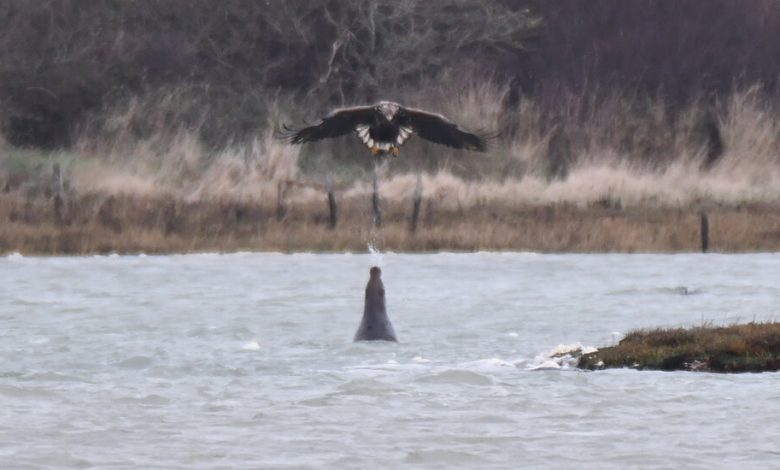A Seal’s Spray Adds a Chapter to the Science of Spitting

On Jan. 3, 2022, Clare Jacobs, a bird-watcher, was delighted to spot a rare white-tailed eagle, or Haliaeetus albicilla, at a nature reserve on the Isle of Wight in southern England. These birds, also known as sea eagles or ernes, vanished from the region some 250 years ago, but more than two dozen birds have been released on the island since 2019.
Mrs. Jacobs trained her camera on the eagle when she noticed something moving in the water below it: a grey seal. The large mammal popped out of the waves and opened its mouth. “It made me jump,” Mrs. Jacobs said.
Then the seal spit a stream of water at the raptor. Although Mrs. Jacobs didn’t realize it immediately, this was highly unusual. Seals had never been seen spitting before, and reports of interactions between these two apex predators are essentially nonexistent.
Mrs. Jacobs’s photos made their way to her daughter, Megan Jacobs, who studies fossils as a doctoral student at the University of Portsmouth, and David Martill, a lecturer at the school. Together, they published the observation last month in the journal of the Isle of Wight Natural History and Archaeological Society.
Both animals feed on fish, though eagles also go for water birds and carrion, and the study authors reason that the seal most likely spat at the eagle to deter a potential competitor. It seems the seal was telling it to “sod off,” Megan Jacobs said.
Sean Twiss, a professor at Durham University who’s spent 30 years studying grey seals, has never seen one spitting. He thinks it’s possible that the seal aimed to deter the eagle, or that it was just being playful. Seals often feed at depth and don’t usually forage in such shallow water bodies such as this harbor, he said, so he couldn’t be sure what the motivation was for the water spout.
